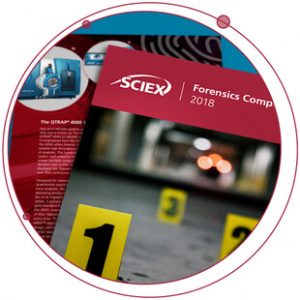 There just isn’t a screening approach available that can give us everything we need when throughput is the priority.
There just isn’t a screening approach available that can give us everything we need when throughput is the priority.
Sound familiar? For many toxicology labs, there is a misconception that compromises need to be made when it comes to high throughput drug screening. True, this certainly has been the case in the past, but things are changing.
Technology is advancing like never before, and this has the potential to revolutionize the forensics field. In the coming years, the beginnings of this revolution may arrive in the form of a fast technique that can detect an unlimited number of analytes with mass accuracy. We are here to tell you that such a technique could be available sooner than you would expect.
The 5 Demands of Forensic Toxicologists
Why settle for a method that doesn’t meet your every demand? At SCIEX, making compromises doesn’t rest easy with us, and so we got to work on developing a faster screening method that meets the five demands of the high-throughput forensic lab:
- “We need a method that generates all necessary information to unequivocally identify all compounds within a single test.”
- “It should incorporate non-targeted data acquisition to screen new compounds introduced to evade the current targeted methodologies.”
- “We need to perform retrospective analysis without re-injecting the sample when new targeted compounds are being added to the screened panel.”
- “The method should be robust without lengthy sample preparation procedures.”
- “Data processing should be fast and straight-forward so inexperienced personnel in our lab can process data without much difficulty.”
Now you can say goodbye to techniques that are slow and inflexible to adapt to new analytes, lack specificities and often require multiple individual tests to complete the entire panel of targeted compounds if your method uses LC-MS/MS with a typical LC run time of more than 5 minutes…adios to this as well.
The Ultra-Fast Method That Meets Them
The team at SCIEX has developed an ultra-fast forensic toxicological screening method with an LC runtime of 2.5 minutes.
In the SCIEX Forensics Compendium 2018, we present the tech note: Ultra-Fast Forensic Toxicological Screening and Quantitation in Under 3 Minutes Using SCIEX X500R QTOF System and SCIEX OS 1.0 Software.
This ultra-fast forensic toxicological screening method has been developed specifically to address the five demands listed above. Using the SCIEX X500R LC-MS/MS system with SCIEX OS Software 1.0, you benefit from mass accuracy, LC retention times and MS/MS spectral library matching. This technology is a great fit for forensic drug screening because the data provides structural information for every possible analyte. Scanning across the full mass range offers the fine spectral details of the precursor ions on the analytes, as well as the product ions in very high resolving power.
In the study, we also compare two non-targeted data acquisition methods: IDA-MS/MS and MS/MSALL with SWATH® Acquisition. Which of these approaches win, or maybe it’s not as clear cut as that? Read the tech note to find out.
Download the Compendium to see this method in its full glory, along with recent advancements developed by the forensics team and a view on where LC-MS/MS technology could take forensics in the future.






 Contact Support
Contact Support
0 Comments